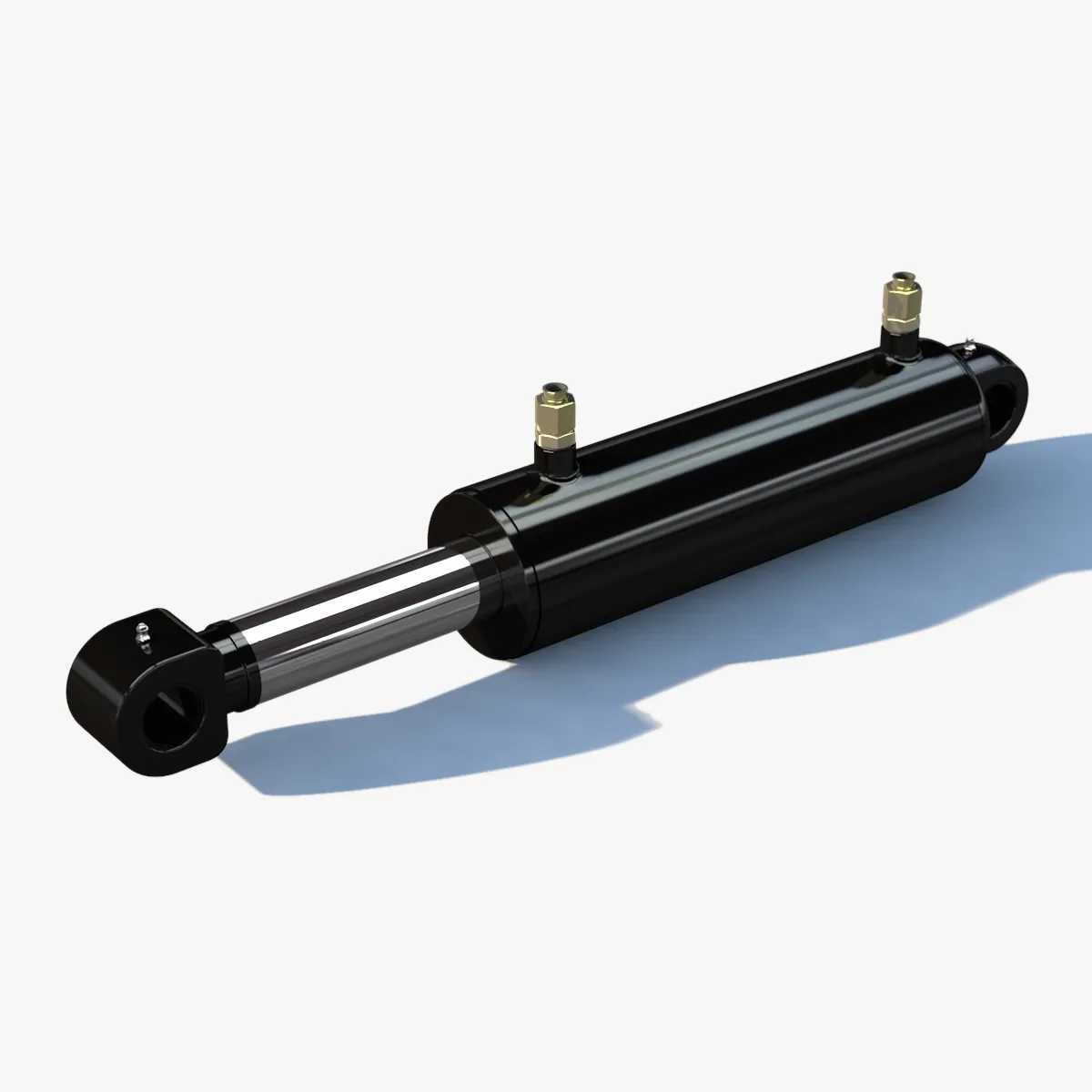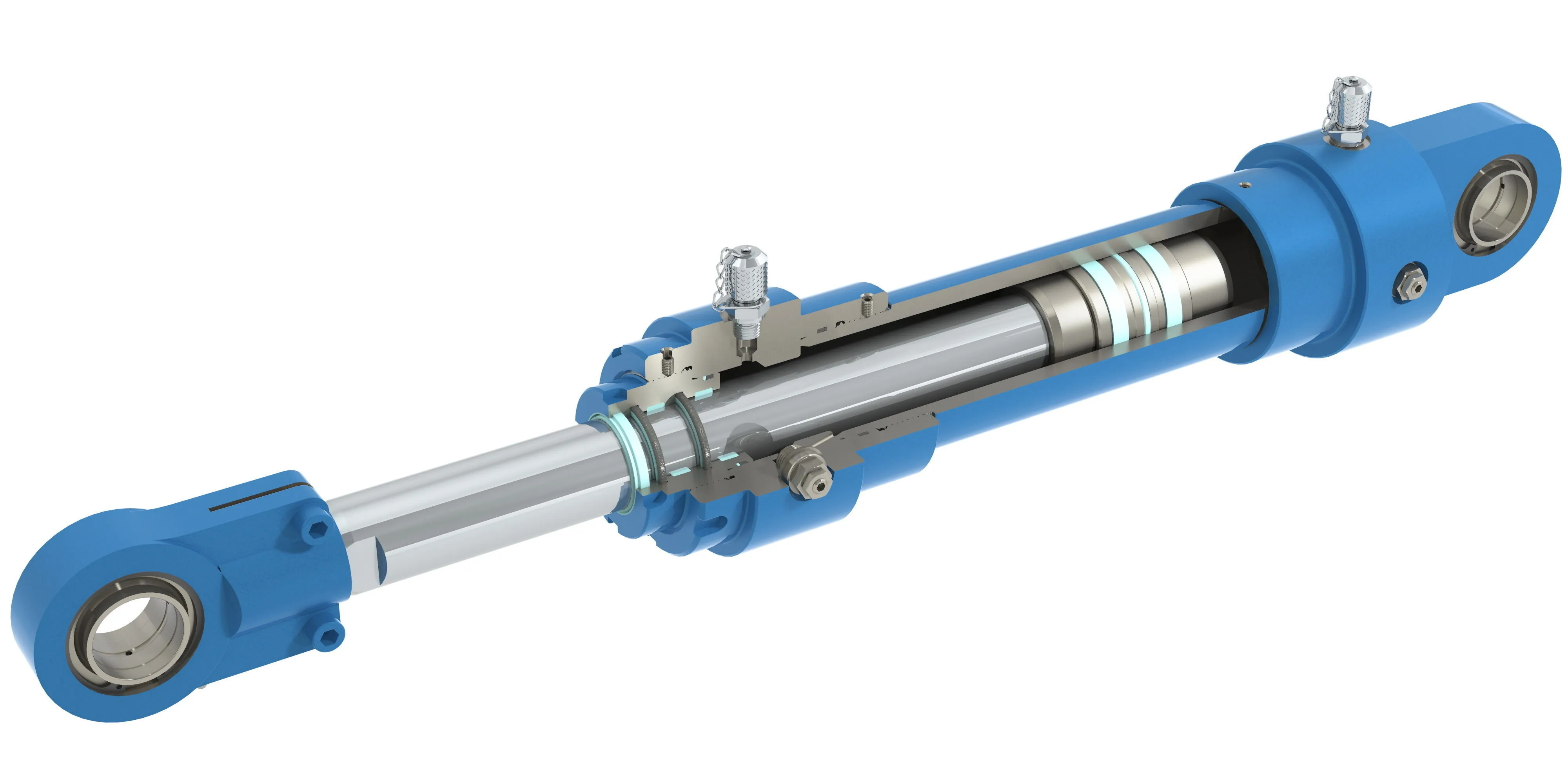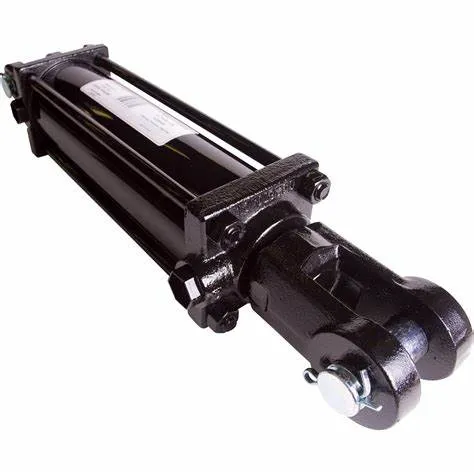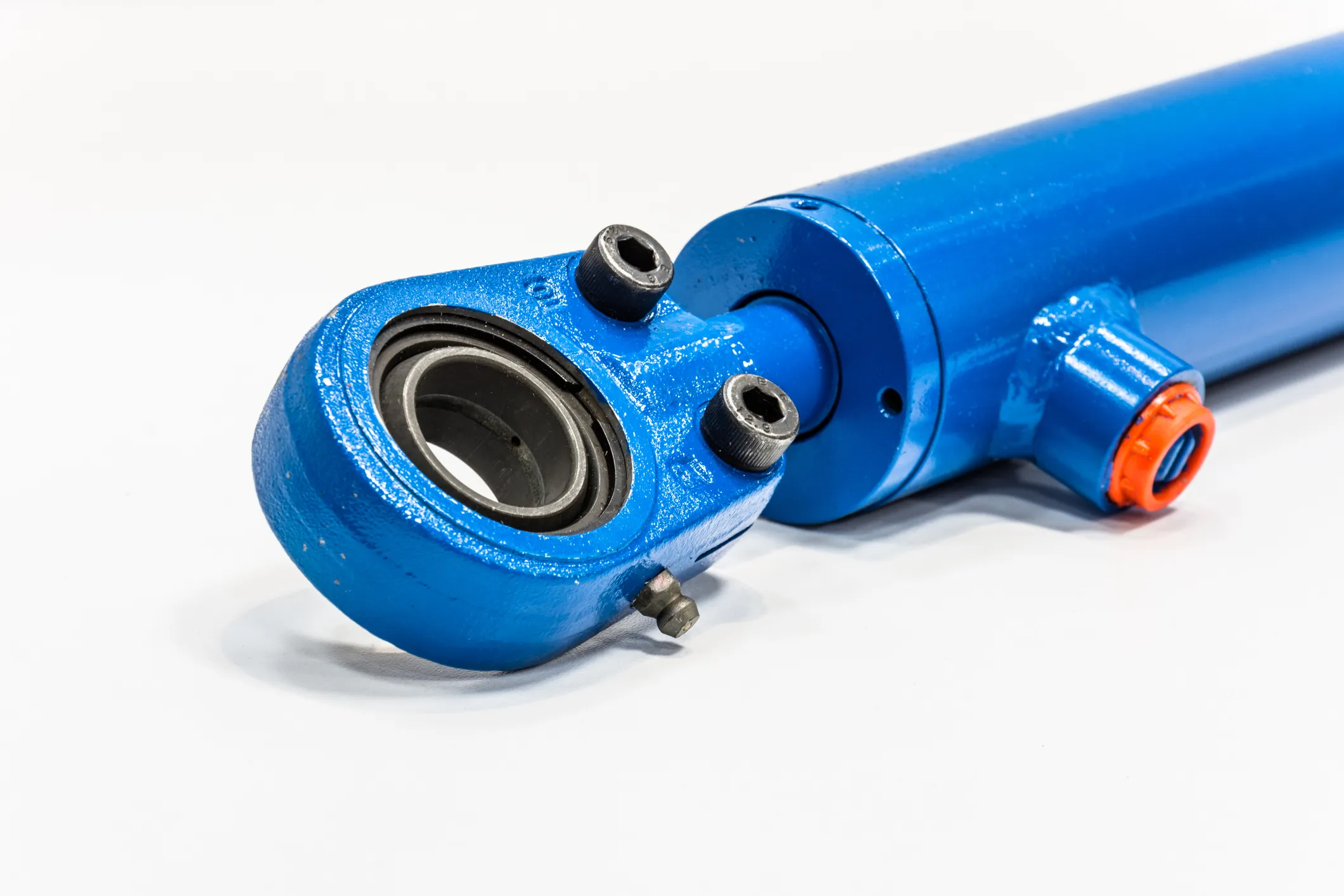Introduction
The locking single-acting hydraulic cylinder is a versatile component that plays a crucial role in various applications, especially in the construction industry. This article will delve into the design, working principle, benefits, applications, maintenance, and more of locking single-acting hydraulic cylinders tailored for construction sites.
Locking Mechanism – Safety
One of the key features of the locking single-acting hydraulic cylinder is its safety mechanism. This mechanism ensures that the piston remains in a secure position even when hydraulic pressure is lost, preventing accidental retractions. The locking mechanism can be either mechanical or hydraulic, providing an added layer of protection.
Variety
The design of the locking mechanism can be customized to suit specific requirements, with options like spring-loaded locking devices, pin locks, or other mechanical locks. This versatility allows for tailored solutions in a wide range of construction applications.
Compact Structure – Space Optimization
Locking single-acting hydraulic cylinders are engineered to be compact, making them ideal for use in confined spaces commonly found on construction sites. Their space-saving design ensures seamless integration with various equipment and machinery.
Precision Manufacturing – High-Precision Machining
The components of locking single-acting hydraulic cylinders undergo high-precision machining to ensure optimal fit and sealing performance, minimizing the risk of leaks. Strict quality control measures are implemented throughout the production process to guarantee the reliability of each component.
Assembly Process – Specialized Assembly
Professional technicians are responsible for the meticulous assembly of locking single-acting hydraulic cylinders, ensuring precise installation and calibration of individual components. A pressure test is typically conducted post-assembly to validate performance and tightness.
Working Principle
The working principle of a locking single-acting hydraulic cylinder revolves around the single-acting mechanism coupled with a locking function. When hydraulic oil is pumped into the chamber, the cylinder extends and pushes the piston outward. The locking mechanism maintains the piston’s position, preventing retraction under load even in the absence of hydraulic pressure.

Types and Configurations
There are three main types of locking single-acting hydraulic cylinders, each offering unique configurations tailored for specific construction applications:
Type 1: Spring-Loaded Locking Devices
Spring-loaded locking devices provide rapid locking and unlocking capabilities, ideal for quick adjustments on construction equipment.
Type 2: Pin Locks
Pin locks offer a sturdy locking mechanism suitable for securing heavy loads in construction machinery.
Type 3: Hydraulic Locks
Hydraulic locks maintain pressure in designated chambers, ensuring consistent performance and safety in construction applications.
Benefits
Locking single-acting hydraulic cylinders offer numerous advantages for construction sites:
Enhanced Security
The locking feature minimizes the risk of accidental retractions, enhancing operator safety on construction sites.
Reliability
Designed to withstand high loads and varying environmental conditions, locking single-acting hydraulic cylinders ensure consistent and reliable performance in construction operations.
Simplicity
Easy to operate and maintain, locking single-acting hydraulic cylinders provide a user-friendly solution for construction equipment, optimizing efficiency on site.
Applications
Locking single-acting hydraulic cylinders find widespread use in construction scenarios:
Construction Equipment
Commonly employed in cranes, hoists, and lifts to securely hold heavy objects in place during construction activities.
Manufacturing
Utilized in presses for material forming under high pressure, providing stability and precision during manufacturing processes.
Transportation
Used in stabilizers and jacks for vehicles to ensure safety during maintenance and transportation operations, enhancing operational efficiency.
Aviation
Integral to the landing gear system of aircraft, locking single-acting hydraulic cylinders secure landing gear positions during takeoff and landing, ensuring safe operations in aviation.
Design Considerations and Selection Criteria
When choosing locking single-acting hydraulic cylinders for construction applications, several key factors should be considered:
Bearing Capacity
Understanding the load-bearing capacity of the cylinders is essential to ensure optimal performance and safety on construction sites.
Sealing and Durability
Effective sealing materials and durable construction are imperative for long-lasting performance in demanding construction environments.
Safety and Maintainability
Prioritizing safety features and ease of maintenance can enhance the overall efficiency and longevity of locking single-acting hydraulic cylinders in construction settings.
Sealing and Lubrication
Proper sealing and lubrication are vital for the optimal functioning of locking single-acting hydraulic cylinders:
Seal Materials
Utilizing high-quality seal materials such as piston seals, rod seals, and wear-resistant compounds ensures effective sealing properties and longevity.
Lubrication
Regularly applying the appropriate amount of hydraulic oil for lubrication enhances the wear resistance of cylinder surfaces and threaded ends, prolonging the lifespan of locking single-acting hydraulic cylinders.
Maintenance and Inspection
Regular inspection and preventive maintenance measures are essential to ensure the continued performance of locking single-acting hydraulic cylinders on construction sites:
Inspection
Scheduled inspections help identify potential issues early on, preventing costly repairs and downtime in construction operations.
Lubrication

Proper lubrication maintenance ensures smooth operation and extends the service life of locking single-acting hydraulic cylinders, enhancing overall efficiency on construction sites.
Seal Replacement
Timely replacement of worn seals is crucial for maintaining optimal sealing performance and preventing leaks in locking single-acting hydraulic cylinders used in construction applications.
Installation Guide
Correct installation of locking single-acting hydraulic cylinders is essential for maximizing their performance and safety on construction sites:
1. Ensure proper alignment of the cylinder during installation to prevent misalignment issues.
2. Use appropriate mounting brackets to securely fasten the cylinders in place, minimizing vibration and potential damage.
3. Follow recommended installation procedures and guidelines to guarantee the effective operation of locking single-acting hydraulic cylinders in construction scenarios.
Safety Considerations
Emphasizing safety measures when using locking single-acting hydraulic cylinders is paramount to prevent accidents and injuries on construction sites:
1. Implement proper training for personnel handling hydraulic equipment to ensure safe operation.
2. Adhere to safety protocols and guidelines to minimize risks associated with hydraulic systems in construction applications.
3. Conduct regular safety inspections and audits to identify and address potential hazards related to locking single-acting hydraulic cylinders.
Fault Diagnosis and Common Problems

Understanding common issues and troubleshooting methods for locking single-acting hydraulic cylinders is crucial for maintaining optimal performance:
1. Leakage: Check for worn seals or damaged components that may cause hydraulic fluid leaks.
2. Piston Sticking: Clean and lubricate the piston to address sticking or sluggish movement in the cylinder.
3. Pressure Loss: Inspect hydraulic lines and connections for leaks or blockages that may lead to pressure loss in the system.
Unit Power
The unit power of locking single-acting hydraulic cylinders is influenced by various factors:
Cylinder Diameter and Stroke
Optimal cylinder diameter and stroke lengths can increase the applied force and enhance power output in construction applications.

Operating Pressure
Higher hydraulic system pressures generally result in greater unit power, but safety considerations must be prioritized to maintain system integrity.
Piston Speed
Adjusting piston speed can impact power calculations and efficiency in locking single-acting hydraulic cylinders used on construction sites.
Load
Different load conditions affect the overall performance and power requirements of locking single-acting hydraulic cylinders, necessitating tailored solutions for specific construction tasks.
Optimizing Power Unit
By optimizing the power unit of locking single-acting hydraulic cylinders, construction sites can benefit from:
Improved Efficiency
Enhanced power output leads to shorter operation times and increased production capacity, optimizing construction processes.
Energy Saving
Efficient design and operation practices reduce energy consumption, resulting in cost savings and environmental benefits for construction projects.
Enhanced Reliability
Strategic power management prolongs equipment lifespan, minimizes failures, and enhances overall reliability in construction applications.
FAQs
Explore common questions and answers related to locking single-acting hydraulic cylinders:
Q: How does the locking mechanism in a single-acting hydraulic cylinder work?
A: The locking mechanism secures the piston in place, preventing retraction under load in the absence of hydraulic pressure, ensuring safety and stability.
Q: What advantages do locking single-acting hydraulic cylinders offer over standard single-acting cylinders?
A: Locking single-acting cylinders provide enhanced security, reliability, and simplicity, making them ideal for demanding construction applications requiring precision and safety.
Q: In what applications are locking single-acting hydraulic cylinders commonly used?
A: Locking single-acting cylinders are utilized in construction equipment, manufacturing processes, transportation vehicles, and aviation landing gear systems to ensure safety and stability during operations.
Long-Tail Keywords
Unlocking the potential of locking single-acting hydraulic cylinders for construction sites involves:
1. Enhanced Safety Measures
2. Tailored Design Configurations
3. Optimal Power Efficiency
Our Company
As a leading hydraulic cylinder replacement manufacturer, our company offers a comprehensive product line tailored for construction applications. With a strong presence in the domestic and international markets, we provide professional, customized services, and high-quality production equipment to meet the diverse needs of our customers. Our commitment to excellence extends to our international certifications, robust after-sales service, and dedication to customer satisfaction.
Author: lyl
